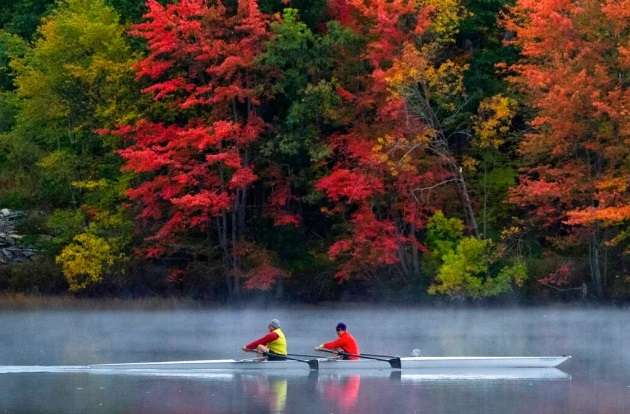Brandi Meisner, selected for U.S. Chamber Foundation Education and Workforce Fellowship Program
Brandi Meisner
Fellowship Provides State and Local Business Leaders with Opportunities to Engage Nationally on Critical Education and Workforce Issues
The U.S. Chamber of Commerce Foundation has announced Brandi Meisner, Vice President of Operations, at Mid-Maine Chamber of Commerce, was selected to participate in the seventh cohort of its premiere business leadership program. The Business Leads Fellowship Program trains and equips leaders from state and local chambers of commerce, economic development agencies, and trade associations with resources, access to experts, and a network of peers to build their capacity to address the most pressing education and workforce challenges.
“Workforce is one of the largest issues that our members face. I am excited to be part of this program to learn innovative ways that we can help them solve their workforce challenges,” says Meisner.
“We created the Business Leads Fellowship Program in response to the needs of our state and local chamber partners,” says Cheryl Oldham, Senior Vice President of the Center for Education and Workforce. “They, better than anyone, see the critical link between education and economic development, and we are glad to be able to support them as they take on this critical leadership role in their community.”
Following a competitive application and selection process, Meisner was selected along with 34 other state and local chamber executives, economic development professionals, and association leaders to participate in the seventh class of this program. The six-month program, consisting of both in person and virtual meetings, will cover the entire talent pipeline, including early childhood education, K-12, postsecondary education, and workforce development.
Upon completion, Business Leads Fellows will join the U.S. Chamber of Commerce Foundation’s dedicated network of over 250 chambers of commerce and statewide associations from around the nation who regularly engage on education and workforce initiatives.
For more information on the Business Leads Fellowship Program, visit the program’s website.




 Now that fall is upon us, the American Red Cross is asking the public to start the season off with a lifesaving blood or platelet donation. While the leaves turn, the need for blood never changes. Those who give this fall play an important role in keeping the blood supply on track for patients counting on blood products for care – especially ahead of the busy holiday season. Book a time to give blood or platelets by using the Red Cross Blood Donor App, visiting RedCrossBlood.org or by calling 1-800-RED CROSS (1-800-733-2767).
Now that fall is upon us, the American Red Cross is asking the public to start the season off with a lifesaving blood or platelet donation. While the leaves turn, the need for blood never changes. Those who give this fall play an important role in keeping the blood supply on track for patients counting on blood products for care – especially ahead of the busy holiday season. Book a time to give blood or platelets by using the Red Cross Blood Donor App, visiting RedCrossBlood.org or by calling 1-800-RED CROSS (1-800-733-2767).
 Leaders of the Lincoln County Democratic Committee (LCDC) marked the kick off of the fall campaign with a Volunteer Appreciation Picnic on September 10, at the Sheepscot Community Center, in Newcastle.
Leaders of the Lincoln County Democratic Committee (LCDC) marked the kick off of the fall campaign with a Volunteer Appreciation Picnic on September 10, at the Sheepscot Community Center, in Newcastle.
 The Kennebec Valley Council of Governments (KVCOG) will be offering Household Hazardous Waste Collection Days for the following locations:
The Kennebec Valley Council of Governments (KVCOG) will be offering Household Hazardous Waste Collection Days for the following locations:
 A new initiative from Efficiency Maine will further expand the coverage of the state’s electric vehicle (EV) charging infrastructure by supporting installation of public EV chargers in rural communities. This is the first of a series of planned EV charging infrastructure incentives from Efficiency Maine using $8 million allocated by Governor Mills’ Maine Jobs and Recovery Plan.
A new initiative from Efficiency Maine will further expand the coverage of the state’s electric vehicle (EV) charging infrastructure by supporting installation of public EV chargers in rural communities. This is the first of a series of planned EV charging infrastructure incentives from Efficiency Maine using $8 million allocated by Governor Mills’ Maine Jobs and Recovery Plan.